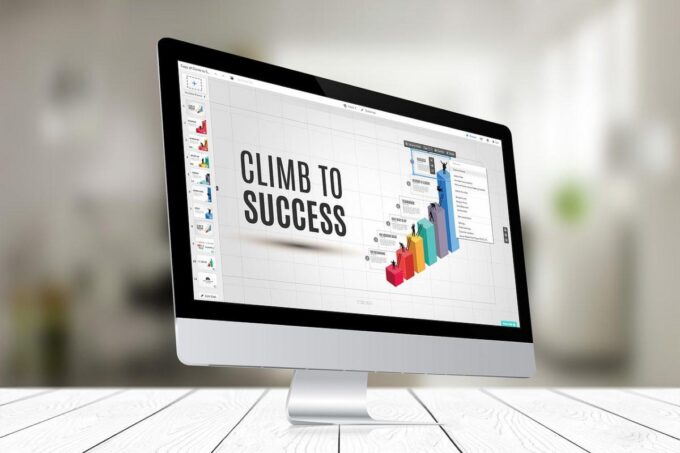It’s not uncommon for people to have creative ideas, but it takes more than just an idea to turn it into a successful product. Many factors come into play in the process of transforming a creative idea into a tangible and marketable product. The journey from the inception of an idea to the boardroom where you pitch your product to potential investors is a complex one that requires extensive research, testing, refining, and preparation.
Inventing and selling your ideas may seem daunting, but it’s a skill that can be learned with practice and dedication. You may have the most innovative and groundbreaking idea in the world, but if you don’t know how to bring it to the market, it will remain nothing more than an idea. However, with the right mindset, tools, and guidance, you can turn your creative ideas into successful products.
This guide is designed to take you through the process of inventing and selling your ideas, step by step.
Beginning of a journey

Source: medium.com
Once you have identified a problem that needs solving, it’s time to research the market and competition. This step is crucial as it will give you a clear understanding of whether your idea is unique and has the potential for success. You want to make sure that your idea hasn’t already been done before, and that there’s a need for your product. You can conduct market research by looking at existing products in the market, analyzing their features, and identifying any gaps or weaknesses that your product can fill. This can be done through online research or by speaking with potential customers.
After researching the market, it’s time to brainstorm potential solutions. This is where you can let your creativity flow and come up with different ways to solve the problem you’ve identified. It’s important to keep an open mind during this process and consider all options, no matter how unconventional they may seem and this website might be helpful for that. Once you have a few potential solutions, it’s time to create a prototype.
A prototype is a preliminary version of your product that demonstrates its functionality and design. It doesn’t have to be perfect, but it should be functional enough to demonstrate how the product will work. Creating a prototype can be done in various ways, from 3D printing to handcrafting a model. You can even use simple materials like cardboard or clay to create a rough model of your product.
Once you have a prototype, it’s time to test it and gather feedback. This is where you’ll be able to see what works and what doesn’t. You can conduct user testing to get feedback from potential customers and make any necessary improvements. It’s important to be open to constructive criticism during this process as it can help you refine your design and improve the user experience.
If your invention is unique, it’s time to file for a patent. A patent is a legal document that grants you the exclusive right to manufacture and sell your invention for a certain period of time. Filing for a patent can be a complex process, so it’s important to hire a patent attorney who can guide you through the process and ensure that your application is complete and meets all requirements.
Refining invention

Source: forbes.com
Congratulations on filing for a patent! Now that your invention is protected, it’s time to start preparing for the boardroom. The boardroom is where you’ll have the opportunity to pitch your invention to potential investors and stakeholders and convince them of its value.
The first step in preparing for the boardroom is to create a pitch deck. A pitch deck is a visual presentation that showcases your invention’s value proposition. It should be clear, concise, and engaging. Your pitch deck should include an introduction to your invention, an explanation of the problem it solves, a demonstration of how it works, and a summary of your market research and business plan. You’ll want to highlight what makes your product unique and why people should care.
It’s important to practice your pitch with colleagues and friends to get feedback and make adjustments. You can even record yourself practicing and watch it back to see where you can improve. You want to be confident and passionate about your invention, while also being clear and concise.
Conducting market research is another crucial step in preparing for the boardroom. You want to understand your target audience, their needs, and preferences, and how your product fits into the market. You can conduct market research through surveys, focus groups, or by analyzing existing data. This information will help you develop a business plan that outlines your marketing strategy, sales projections, and financial goals.
Your business plan should include a detailed analysis of your competition, including its strengths and weaknesses. You’ll want to demonstrate how your product is superior and can fill a gap in the market. It’s important to be realistic in your projections and show that you’ve done your homework.
Preparing for the boardroom

Source: forbes.com
It’s time to start selling your invention. Identify potential investors and partners who would be interested in your product. Make a compelling pitch to potential investors, highlighting the benefits and potential of your product. Negotiate terms and secure funding. Partner with manufacturers and distributors to bring your product to market.
Selling Process
One thing to keep in mind is that inventing and selling your ideas is a challenging process. It takes time, effort, and dedication to turn your ideas into successful products. But with the right mindset and tools, you can make it happen. Remember that not every idea will be successful, but that’s okay. Failure is a part of the process and can help you learn and grow.
Conclusion
Inventing and selling your ideas takes more than just a great idea. It takes research, testing, refinement, and preparation. By following these steps, you’ll be well on your way to bringing your invention from brainstorming to the boardroom. Don’t give up, keep pushing, and believe in yourself. Who knows, you could be the next great inventor of our time.






